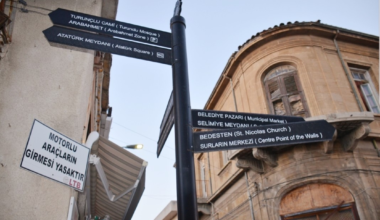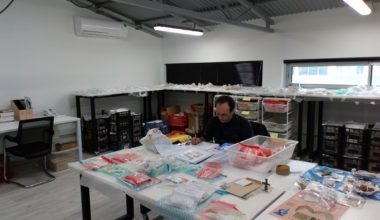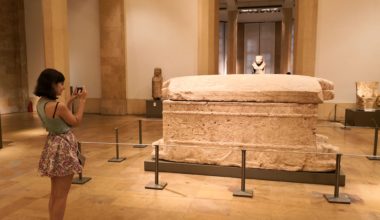By Andrea Villani
I have been working in Cypriot archaeology since 2017: it was a (predictably) warm, sunny day when I landed on the island for the first time. At that time I would not have imagined that I would be involved in many excavation and survey projects in the years to come. Gradually, I have deepened my understanding of the island’s unique history, traditions, and cultural heritage and built lasting friendships with local and international colleagues. Through these interactions, I have gained a deeper appreciation of the profound impact that recent historical events had on Cyprus so that I decided to ‘dig’ deeper in this recent past.
My PhD project focuses on the processes of site abandonments in Middle Bronze Age Cyprus. Thanks to the topic of my studies, I have become increasingly interested in how modern events have shaped the island, particularly in the 20th century, when natural disasters, the 1974 war, and economic factors have significantly altered the island’s lifeways and settlement patterns. This awareness led me to dedicate part of my research efforts to a parallel project aimed at mapping villages abandoned during the 20th century. The objective of this work is twofold: from an (ethno)archaeological perspective, to observe how natural and human-induced processes contribute to the alteration of abandoned buildings and landscapes, and from a cultural perspective, to highlight how these deserted villages represent a vanishing cultural heritage. My approach to the topic and my archival research underwent a significant evolution when the CBRL selected me for the Andrea Zerbini 2023/2024 Award. This provided me with the opportunity to visit several of the villages I had mapped and document, through drone and camera photography, the disappearing rural cultural heritage of Cyprus.
Investigating abandoned rural villages and regions
During the initial weeks, I focused on archival research and planned which areas would be most valuable for the first phase of documentation. Access to the Cyprus American Archaeological Research Institute of Nicosia (CAARI) was crucial for organising my fieldwork effectively. I consulted census data and toponymical publications to gather information on the founding and history of these villages. I also used aerial orthophotos from the Cypriot Department of Lands and Surveys (DLS portal) and old maps to observe how landscapes, villages, and regions have evolved over the years. Maps and aerial photos were essential in revealing that many of these villages have already completely disappeared, suggesting that those still visible may be destined for a similar fate in the coming decades.

The second part of the grant was used to surveying selected places. I visited 22 villages, mostly located in the Paphos and Nicosia Districts. These villages showed a varied range of abandonment dynamics, building materials, and the timing of desertification. This was an incredible research opportunity as it allowed me to verify the wealth of information these sites offer for understanding collapse dynamics, building and artefacts’ reuse, the internal evolution of houses, variations in building materials and abandonment processes.
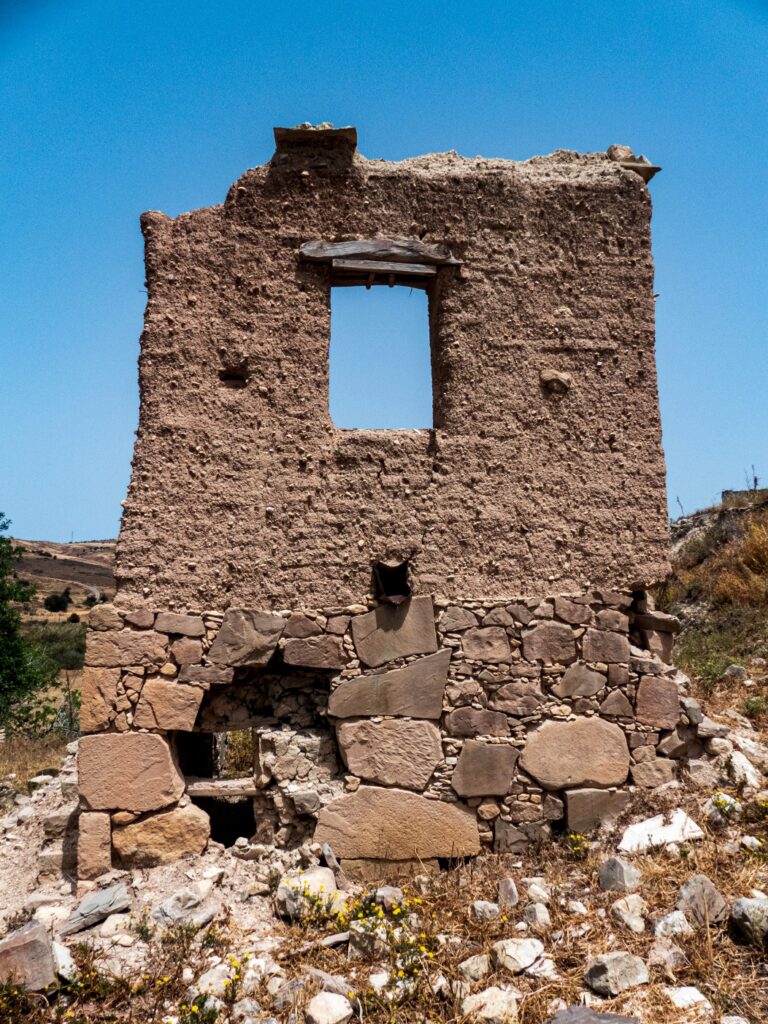
While many villages are already in ruins and have been completely abandoned, others have not been entirely deserted or have undergone partial reoccupation in recent years. A few residents, mostly shepherds, continue living near the collapsing buildings. Most of them are elderly and were often surprised by the visits of a solitary Italian researcher interested in the stories of places not always marked on maps. Even though I have experienced many times the Cypriot warm hospitality, I was still surprised by the incredible kindness of these elderly residents—some offered me oranges, others drinks, and many shared the reasons behind the abandonment of their villages. They were all curious about the reasons of my interest in visiting places that are vanishing and are only occasionally visited by former inhabitants, their descendants and few curious tourists. During my solitary visits, I often found myself reflecting on what life was like in these once-thriving communities—homes to people, families with diverse stories, backgrounds and religions. In one word: existences.

This is an ongoing project, and I am dedicated to continuing the documentation in the coming years. There are still many villages to visit, people to interview, and archival records to examine. I believe this research will provide valuable insights, through an ethnoarchaeological analysis, for drawing analogies with ancient processes. Furthermore, preserving the memory of these places, their stories, and the events leading to their desertification is essential for preventing similar occurrences in the future.
In conclusion, this is just the beginning: there is much work ahead, and the urgency of the documentation cannot be overstated!
Acknowledgments
I am grateful to the CBRL and my lead contact, Dr Palmer, for their support. Special thanks to the CAARI staff for their assistance in Cyprus and to all the colleagues and friends who encouraged this project. I also thank the Andrea Zerbini Foundation—without their financial support, this project would not have started.
Finally, I would like to show appreciation to Dr Andrea Zerbini. Although I never had the opportunity to meet him, the contributions written in his honour capture the essence of his work. Furthermore, his decision to establish a fund to support young researchers and scholars reflects the remarkable person he was—and continues to be, thanks to his enduring legacy.
Biography
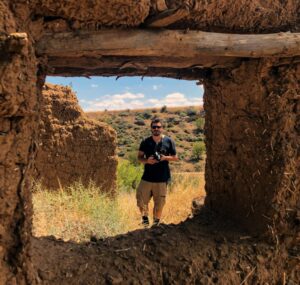
Andrea Villani is a PhD student at the University of the Balearic Islands (UIB). His research primarily focuses on analysing abandonment processes in prehistoric Cypriot sites, integrating material culture with ethnoarchaeological approaches. He has participated in over 30 archaeological excavations and surveys in Italy and Cyprus, spanning from prehistory to the modern era.
The views expressed by our authors on the CBRL blog are not necessarily endorsed by CBRL but are commended as contributing to public debate.












